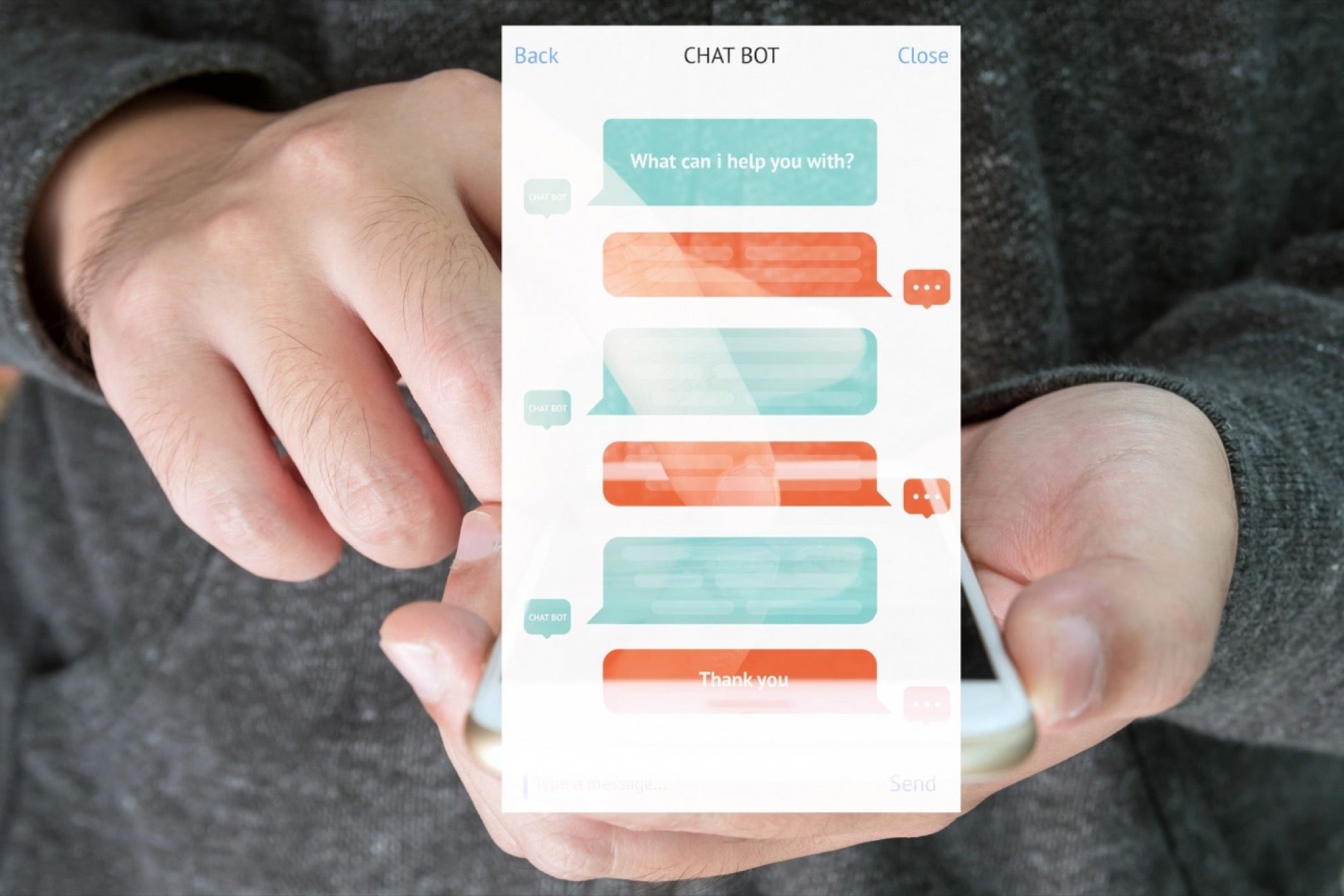10 Metrics Your Chatbot Should Track to Optimize User Experience incorporating a chatbot into your marketing campaign can completely change the way you interact with your audiences
By Murray Newlands •

Opinions expressed by Entrepreneur contributors are their own.

It's no secret that incorporating a chatbot into your marketing campaign can completely change the way you interact with your audiences. Moreover, bots can engage and help your current and future customers around the clock, providing assistance and answering questions when you aren't available or busy with other tasks.
Thanks to platforms like Chattypeople.com, creating and managing AI-powered chatbots is easier than ever. That being said, building a successful bot is an ongoing effort. Keep in mind that the first version you roll out will most likely not be the last.
In addition, all changes and improvements you make to your chatbot need to be based on facts, not guesswork. In order to make the necessary changes, you have to monitor a set of key metrics that will tell you what your audience likes about your bot, what needs to be improved, and what you need to remove completely.
Although chatbots have already made a significant impact in the world of marketing, there's still a lot of mystery surrounding their metrics. Unlike other well-established channels, most of the numbers available for chatbots are brand new, so they tend to confuse both marketers and entrepreneurs. That being said, you also have to take into account certain traditional metrics that will help you paint a better picture of your bot's performance.
Because of this, I've put together a list of 10 metrics you want to measure and consider when optimizing your bot to ensure it provides the best possible user experience.
Related: Enterprise Chatbots and the Conversational Commerce Revolutionizing Business
1. Total number of users reached
Percentages matter, and if your sample isn't large enough, these numbers will not be as relevant or meaningful as you desire. To verify the validity of all your metrics, you have to look at the total number of users reached. Think about it this way: if your bot interacts with 1,000 or more users, you have a decent sample size to work with, whereas chatbots that reach only 10 users aren't properly optimized.
Related: Top 10 Best Chatbot Platform Tools to Build Chatbots for Your Business
2. Average session duration
Once you've confirmed that your chatbot has interacted with enough users, you can start looking at fundamental stats that will give you a basic idea of usage. Average session duration is a good metric to measure, but you have to apply it to your specific industry and circumstances.
For instance, some chatbots are designed solely to answer questions and help clients. In this case, session durations should be on the shorter scale. On the other hand, bots who specialize in placing orders or telling a story should engage users in longer, more meaningful interactions.
Related: Enterprise Chatbots Platforms and the Future of Work
3. Sessions per user
Approximately 4 in 10 people interact with a chatbot once, which may be a sign that it didn't provide the answers for which these users were looking. Keeping an eye on the number of sessions per user is extremely important, as it could be an indication as to whether or not your chatbot is doing its job properly.
Look at the conversations where users interacted with your bot the least to establish which issues it was unable to solve. You should, however, also look at users who have had multiple sessions with your chatbot in order to see what it did right. You can then use this as a blueprint and aim to recreate this type of conversation every time someone interacts with your chatbot.
Related: How to Create a Facebook Messenger Chatbot For Free Without Coding
4. Interactions per user
Another solid indicator of your bot's performance is the number of interactions per users. This metric is similar to session duration in the sense that the right number will depend on your bot's purpose.
If your bot's primary purpose is to sell, many interactions can mean clients are interested and asking a lot of questions about the product, which can easily escalate into a sale. On the other hand, service-oriented bots that have many interactions can mean that users aren't getting the answers they need quickly enough.
5. Click-through rates (CTR)
Although CTR isn't currently a major metric, it will undoubtedly become one of the most important ones to look out for in the future. Remember, if the interaction is meant to be self-contained, meaning the sales/service process should be accomplished solely through your bot, high CTRs can be a major red flag.
6. Active and engaged users
The main difference between an active and engaged user is that active users will only read the messages sent by your bot, whereas engaged users will respond to their requests or answers. This is important because you can learn a lot from the users who are constantly engaged, allowing you to make changes to your bot to accommodate for these types of conversations.
Related: Make Chats With Chatbots Work
7. Confusion triggers
Not only should you think about the way your users react to your bot, but how your chatbot behaves when faced with difficult tasks and requests. There are many ways a user can make a request or ask a question; if your bot is confused, it will likely come up with a response such as "I don't understand." Measure the number of times your bot shows confusion triggers and analyze each case individually to discover the best way to prevent this from happening in the future.
8. Response time
Users want fast responses; although most answer within seconds, you need to make sure your chatbot is not the odd one out. For this, you can either run specialized tests or simply interact with your bot to see how long it takes to respond.
Related: The How-To: Using Chatbots As A Tool For Customer Service
9. Conversation steps
Again, this is one of the metrics that will depend heavily on the purpose of your bot. If your bot is meant to participate in short, straight-to-the-point conversations, you want it to have as little steps as possible. On the other hand, you want emotional chatbots to create a meaningful connection with your audience, so more steps are usually good news.
10. Retention rates
You'll also need to determine the life cycle of each interaction. If your bot provides daily updates, you want to focus on a 1- to 3-day retention rate. If your bot helps users place orders, you want them to be engaged until the day their order is received and signed for.
Related: Social Media Marketing Strategies With Chatbots
Finally...
Measuring the right metrics for your chatbot is the key to developing a successful bot that engages with your audience. Keep an eye on the metrics I outlined above to optimize your bot in providing the best user experience, exponentially increasing the impact your chatbot has on your marketing and branding campaigns.











